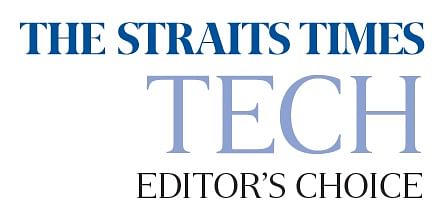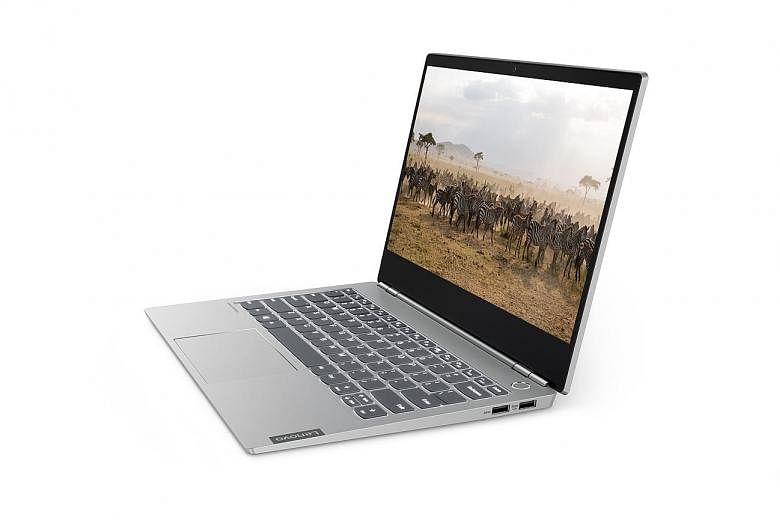The new Lenovo ThinkBooks blur the line between the PC-maker's consumer and business laptops.
Sleek and stylish, the ThinkBooks look anything but dowdy, even when placed next to premium ultrabooks.
But unlike consumer laptops, the ThinkBooks have essential business features, such as hardware encryption.
They are also more affordable than Lenovo's famed ThinkPads, which will likely pique the interest of small and medium-sized businesses.
The slim ThinkBook 13s could easily be mistaken for one of Lenovo's IdeaPad consumer laptops.
It has the wedge-shaped profile typically found in ultrabooks, a design that accentuates its slimness. Its brushed grey chassis, which is a mix of aluminium and magnesium, weighs around 1.4kg.
It has two full-size USB ports, a USB-C port and a HDMI port. Current ThinkPad owners can reuse their power adapters with the ThinkBook.

-
FOR
• Slim and attractive build
• Useful business features
• Relatively affordable
AGAINST
• Lacks lock slot and Thunderbolt 3
• Viewing angles could be better
-
SPECS
-
PRICE: $1,599
PROCESSOR: Intel Core i5-8265U (1.6GHz)
GRAPHICS: AMD Radeon 540X 2GB GDDR5
RAM: 8GB DDR4
SCREEN SIZE: 13.3 inches, 1,920 x 1,080 pixels
CONNECTIVITY: USB Type-C 3.1 Gen 2, 2 x USB 3.1 Gen 1, HDMI, headphone jack
BATTERY: 45 watt-hour
RATING
FEATURES: 4.5/5
DESIGN: 4/5
PERFORMANCE: 4/5
VALUE FOR MONEY: 4.5/5
BATTERY LIFE: 5/5
OVERALL: 4.5/5
Compared with a typical ThinkPad, the newcomer lacks an Ethernet port and memory card slot. A more premium laptop might also come with a faster Thunderbolt 3 port. Lenovo also dropped the ball by not including a lock slot to physically secure the ThinkBook.
However, Lenovo included a couple of useful security features. Firstly, its Web camera has a privacy shutter that lets you physically block the view of the camera, which can deter snooping hackers.
Another security feature I did not know I needed until I tried it - a fingerprint sensor integrated with the power button. Press this button with a registered finger to boot up and log into Windows 10 without further verification.
Its keyboard is spacious and backlit, but the keys do not feel as bouncy or as firm as a ThinkPad's. There is no iconic red pointing stick too.
But the ThinkBook's touchpad is slightly larger than the one on my ThinkPad X270, so there is more space for multi-finger gestures.
Its 13.3-inch screen has narrow side bezels, though the bottom one is chunky. Viewing angles are decent, but there is some colour shift when looking at the screen from the sides.
The display supports Dolby Vision HDR, a high-dynamic-range format that increases the range of colours and contrast of compatible videos. Compared with my monitor, which lacks this feature, the ThinkBook's display is significantly more vivid and brighter while playing HDR videos on YouTube.
But this screen is rated at a typical 300nits brightness, so do not expect it to rival the experience produced by 1,000nits HDR-capable television sets.
Surprisingly, the ThinkBook comes with a dedicated graphics chip instead of an integrated one. This entry-level AMD chip gives a slight boost for tasks such as photo and video editing, but is fast enough only for casual games. For instance, first-person shooter game Apex Legends runs at a sluggish 22 frames per second at 1,280 x 720 pixels.
On a par with most recent ultrabooks, the laptop battery lasts around seven hours in the video-loop battery test.


